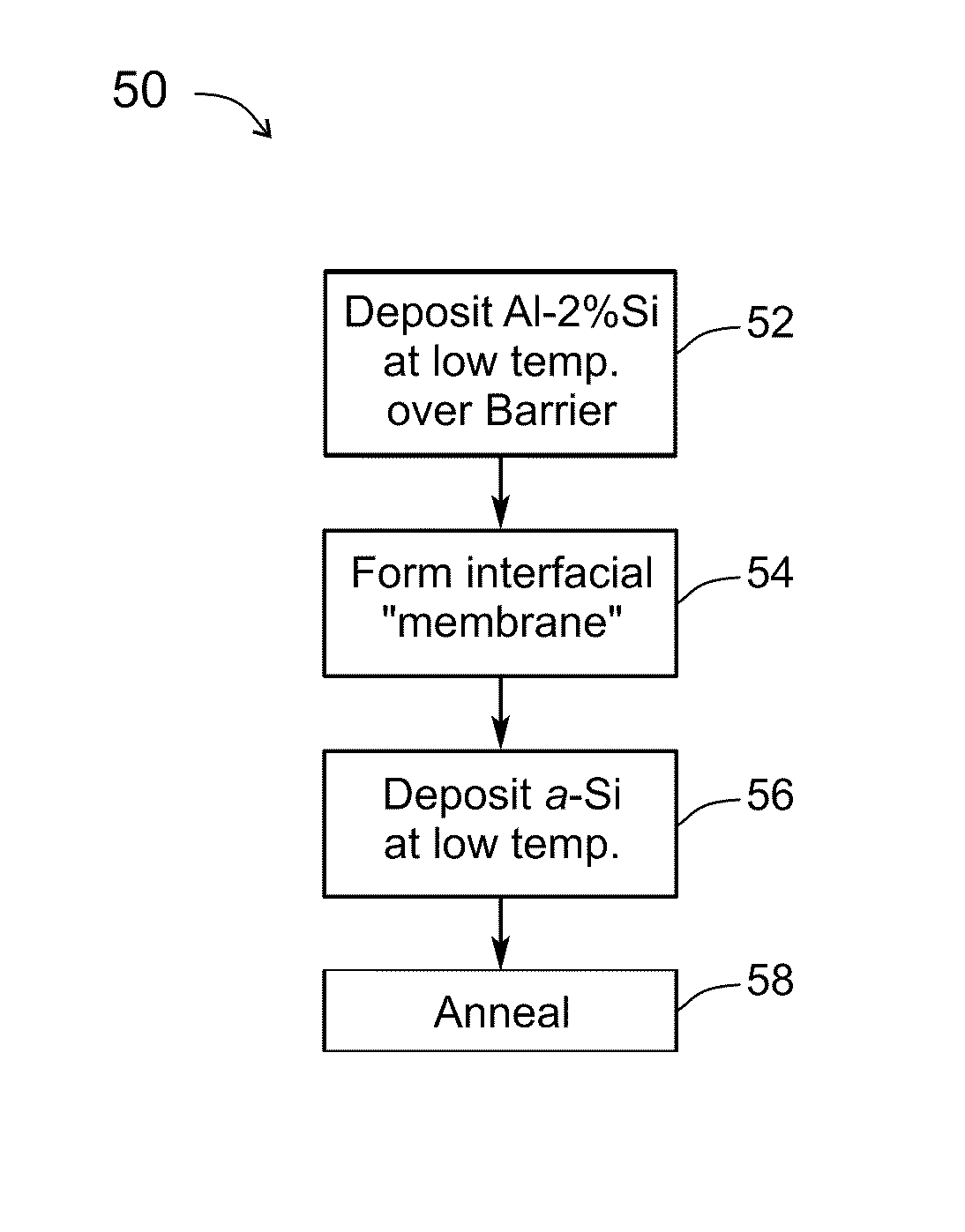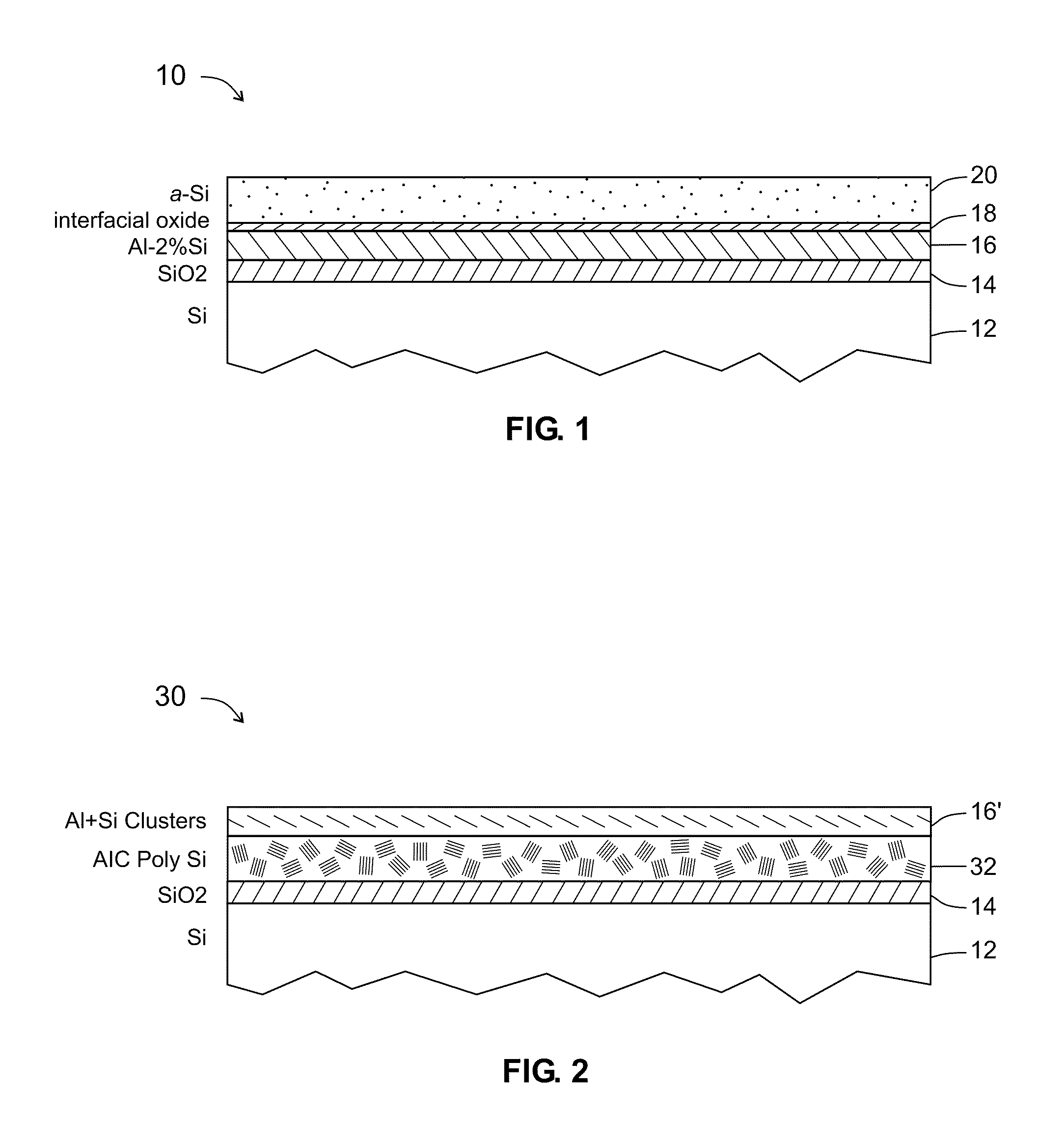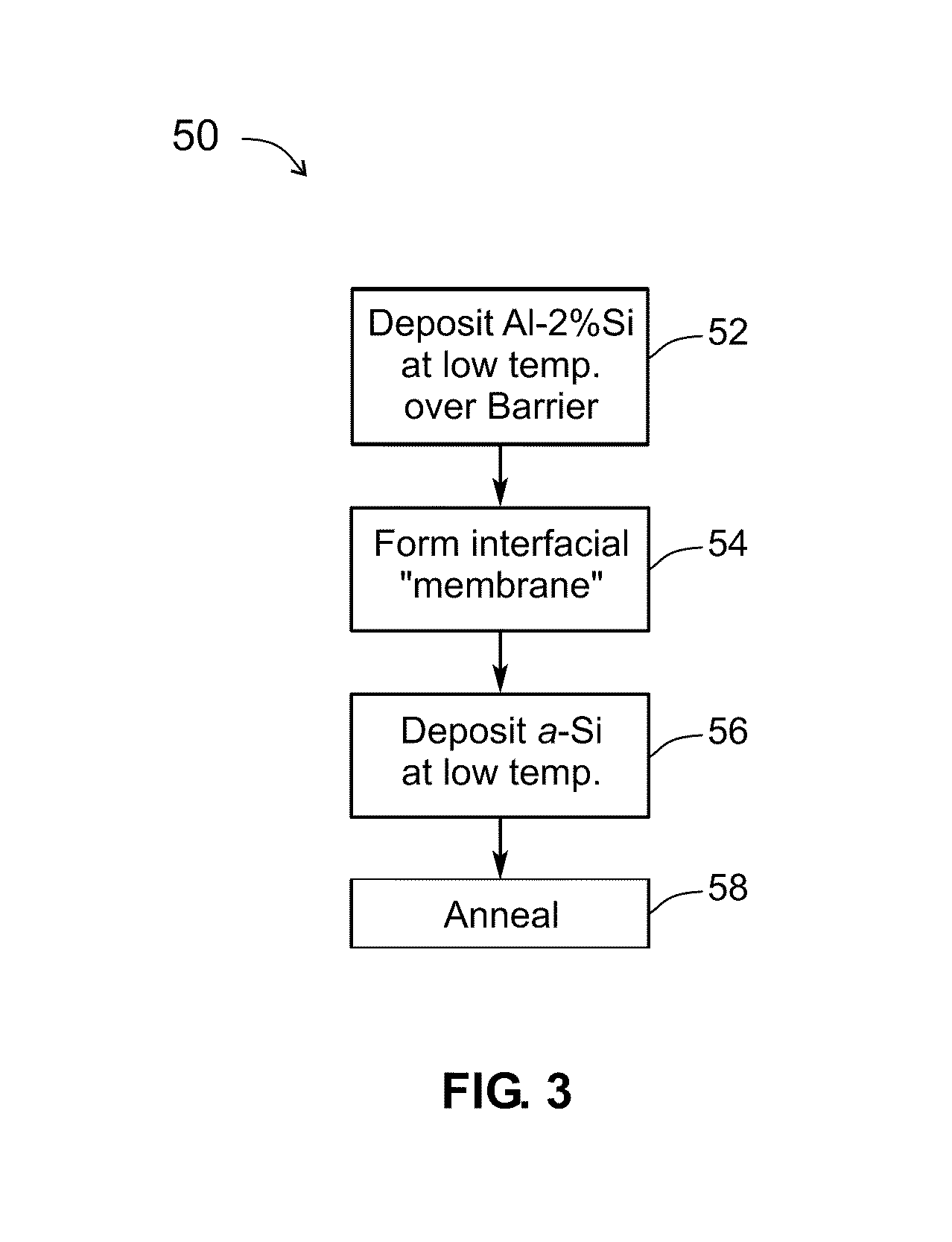Low-temperature formation of polycrystalline semiconductor films via enhanced metal-induced crystallization
a technology of enhanced metal crystallization and low temperature, applied in the direction of polycrystalline material growth, crystal growth process, coating, etc., can solve the problems of unsuitable poly-si film formation on low-cost glass and plastic substrates, unsatisfactory, various other techniques, etc., to achieve enhanced poly-si film formation, rapid crystallization, and low temperature
- Summary
- Abstract
- Description
- Claims
- Application Information
AI Technical Summary
Benefits of technology
Problems solved by technology
Method used
Image
Examples
Embodiment Construction
[0048]Referring more specifically to the drawings, for illustrative purposes the present invention is embodied in the apparatus generally shown in FIG. 1 through FIG. 14. It will be appreciated that the apparatus may vary as to configuration and as to details of the parts, and that the method may vary as to the specific steps and sequence, without departing from the basic concepts as disclosed herein.
[0049]1. Introduction
[0050]The invention provides a method by which the temperature required to form polycrystalline semiconductor films can be reduced to temperatures at or even below 300° C., thus opening many new application areas. Benefits are provided over conventional metal-induced crystallization in response to inclusions of small percentages of semiconductor within the metal material.
[0051]FIG. 1 illustrates an embodiment 10 of material layers shown in cross-section which have been deposited preparatory to forming the polycrystalline semiconductor, which by way of example is pol...
PUM
| Property | Measurement | Unit |
|---|---|---|
| temperature | aaaaa | aaaaa |
| temperatures | aaaaa | aaaaa |
| temperatures | aaaaa | aaaaa |
Abstract
Description
Claims
Application Information
 Login to View More
Login to View More - R&D
- Intellectual Property
- Life Sciences
- Materials
- Tech Scout
- Unparalleled Data Quality
- Higher Quality Content
- 60% Fewer Hallucinations
Browse by: Latest US Patents, China's latest patents, Technical Efficacy Thesaurus, Application Domain, Technology Topic, Popular Technical Reports.
© 2025 PatSnap. All rights reserved.Legal|Privacy policy|Modern Slavery Act Transparency Statement|Sitemap|About US| Contact US: help@patsnap.com



